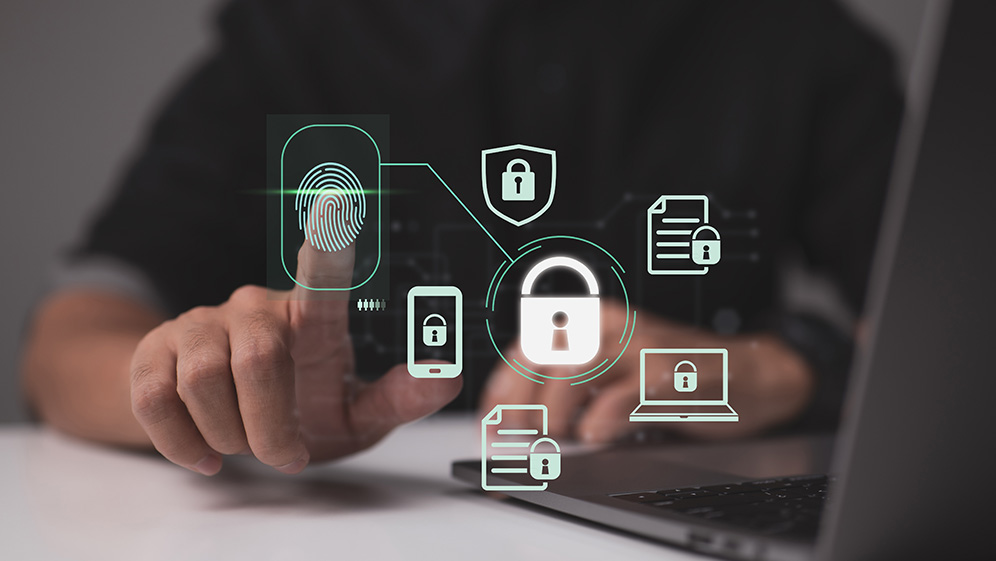In cybersecurity, authentication is crucial for guarding sensitive information against those who would use it for ill gains. Traditionally, passwords have been the primary means of authentication. However, as cyber threats become increasingly sophisticated, the limitations of password-based systems have become apparent.
To address these challenges, many organizations are transitioning to passwordless authentication methods. These innovative systems offer enhanced security and user experience by eliminating the need for passwords.
The switch to passwordless authentication
Authentication in the context of cybersecurity is the process of ensuring that the entity attempting to access sensitive information (banking information, identity documentation, government information, medical documents, etc.) is both an entity that is properly permitted to access it and is the entity that they are claiming to represent. To put it more simply, authentication is a service’s method of making sure that only the right people – people you specify – get to see your data.
The most classic form of authentication online is a password. Passwords are specific phrases or strings of symbols that act as a sort of key for the “lock” protecting your information. Users enter an account identifier – usually a name, email, or username – and a password into the verification screen. The service compares what was entered to what is on file as valid for this information and, if they match, grants access. It’s a relatively straightforward system.
Because of its simplicity, however, password authentication systems are insecure in the modern world. Simple programs like keyloggers and common scams like phishing gather information quickly and can make it easy for cybercriminals to access your information. Beyond this, there are thousands of password databank breaches annually that can mean your information is exposed even if you yourself are extremely careful with it. Passwords are easy to misplace, forget, or input incorrectly, meaning that lots of time needs to be spent recovering password-protected accounts, which is both frustrating and time-wasting.
To combat this, many companies are now switching to passwordless authentication systems. As the name implies, a passwordless authentication system uses alternative methods to verify a user’s identity, not requiring a specific password at all. This eliminates the need for a password databank and can be easier to encrypt for security. It also means that keyloggers are rendered useless and spoofing for a phishing scam is harder to do.
Passwordless authentication vs reCAPTCHA
Of course, there are methods of bolstering password authentication. This usually involves establishing multi-factor authentication with additional layers like reCAPTCHA. ReCAPTCHA is Google’s authentication system based on the CAPTCHA method; users input the digits or letters presented to them in a slightly distorted photo that many image identification bots struggle to read. In newer versions of reCAPTCHA, users must select a particular object from a grid system of a photo or set of photos or must answer a question.
Systems like reCAPTCHA can still have vulnerabilities, however. Modern machine learning models and artificial intelligence programs have vastly improved photo recognition algorithms and can parse the tests relatively easily and quickly, meaning that bad actors can still access sensitive information with relatively little effort. Passwordless authentication is still not as vulnerable to this kind of attack because it doesn’t rely on a specific typed input in the same way from users and often instead relies on another personal identifier selected at account creation, which can’t be predicted by these programs.
Enhanced user experience with Netlok’s passwordless authentication system
When it comes to securing online accounts, Photolok from Netlok is a passwordless authentication method that offers a practical and user-friendly alternative to traditional password-reliant methods like reCAPTCHA. Photolok leverages photos to authenticate users in a way that’s both effective and intuitive.
This unique software’s authentication process works like this. Users select and categorize photos to use as verification keys; they can be labeled as multi-use, one-time use, or “Duress” (a distress signal). During login, users are asked to identify their chosen photo from a grid of similar photos from Photolok’s proprietary database. This approach eliminates the need for passwords entirely, making it a robust alternative to conventional password-based systems.
In terms of defending against AI and machine learning attacks, Photolok is particularly effective by design. Its system is built with advanced encryption and lateral defenses, which standard password-cracking tools cannot bypass. Since there are no passwords to crack and photo recognition software needs specific training and prompting to identify photos, AI attacks are considerably less effective; there is no “please choose this item” prompting for them to rely on for identification. The use of one-time-use photos further complicates any potential data collection by attackers, making it challenging for them to amass useful information over time. Additionally, keylogging systems are ineffective with Photolok, as the user’s photo location on the grid changes with each login.
As mentioned, traditional CAPTCHA tests, including advanced versions like Google’s reCAPTCHA, were designed to thwart simple automated attacks, but AI’s rapid advancement left CAPTCHA systems of all kinds outdated and less effective against sophisticated threats. Photolok provides a modern solution with its photo-based system, offering superior protection against both AI-driven and human social engineering attacks alike. Photolok’s ease of use and strong security make it an excellent choice for enterprises seeking a more reliable authentication method. Visit Netlok’s website to learn more and schedule a demonstration to see Photolok in action.

